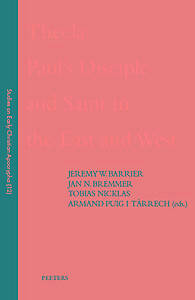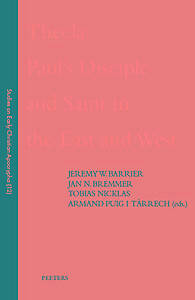
- Afhalen na 1 uur in een winkel met voorraad
- Gratis thuislevering in België vanaf € 30
- Ruim aanbod met 7 miljoen producten
- Afhalen na 1 uur in een winkel met voorraad
- Gratis thuislevering in België vanaf € 30
- Ruim aanbod met 7 miljoen producten
Zoeken
Omschrijving
This book is the first modern collection of studies about the fascinating figure of Thecla and the development of her cult in East and West. While her role in the Acts of Paul and Thecla has often been analysed, and was the subject of an earlier volume in this series, the historical development of her cult from early Christian to modern times has received much less attention and is therefore the subject of this book. The volume starts with a series of four studies that trace her cult and its literary manifestations from late Antiquity to Byzantine times. We hear about visions of Thecla and additional miracles beyond those already known, and we can follow her cult from Asia Minor, through Syria, to Turfan in modern Western China, although the autonomy and uniqueness of Thecla was often suppressed in these new localities. From the East we move to the West where her figure appears in Latin texts and a previously unpublished Arabic version of the Acts of Paul and Thecla. Subsequently, three chapters analyse representations of Thecla in Turkish Ayatekla (ancient Seleucia), in the grotto of St Paul in Ephesus and in Coptic iconography. From the East we then move back to the West, particularly to Spain. Thecla's cult was brought from Asia Minor via Armenia to Tarragona, where it remains alive today. The last two chapters look at the historiographical trajectories of the Acts of Paul and Thecla and the testimonies of the Christian martyrs, respectively. As has become customary, the volume concludes with an extensive bibliography and detailed index.
Specificaties
Betrokkenen
- Auteur(s):
- Uitgeverij:
Inhoud
- Aantal bladzijden:
- 391
- Taal:
- Meerdere talen
- Reeks:
- Reeksnummer:
- nr. 12
Eigenschappen
- Productcode (EAN):
- 9789042932975
- Verschijningsdatum:
- 9/03/2017
- Uitvoering:
- Paperback
- Formaat:
- Trade paperback (VS)
- Afmetingen:
- 150 mm x 229 mm
- Gewicht:
- 589 g

Alleen bij Standaard Boekhandel
+ 148 punten op je klantenkaart van Standaard Boekhandel
Beoordelingen
We publiceren alleen reviews die voldoen aan de voorwaarden voor reviews. Bekijk onze voorwaarden voor reviews.








